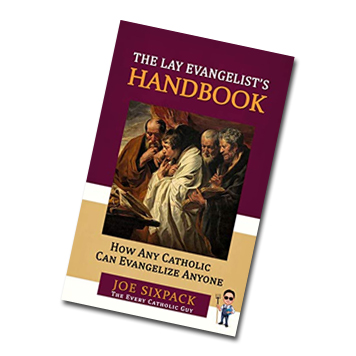Brace Yourself For Some Very Unsettling News
By MIKE MANNO
This is my fifty-second weekly column, which means I’m closing out my first year doing this. It’s been an eventful year filled with stories, both big and small, that will somehow affect every reader of this publication.
During the past year I have commented upon and tried to expose those events, both legal and societal, that make up the growing crisis that we, as Christians and as Americans, face. Writing a weekly column, however, does not allow me to do more than scratch the surface of most issues and, simply by time and space limitations, forces me to ignore many others.
There is one issue, however, that I have failed to report to you. It is, I believe, perhaps the most monumental issue facing us today. I do not exaggerate. This issue is festering at the very core of our unique American culture and if allowed to continue may very well threaten our understanding of the universe itself.
This is a harsh reality and, my friends, I cannot be silent about it any longer lest I be accused of engaging in a journalistic cover-up. Now I must warn you, what you are about to read will be shocking and my mere mention of it may cost me my job. So if you are brave enough to face this horror, I give you one last warning: If you are in the habit of reading to your family, please send the children out of the room.
It is the designated hitter rule and its ugly, morally corrupt sister, interleague play.
There I said it! St. Abner Doubleday, who was God’s instrument to bring His Game to our imperfect world, must be rolling over in his grave to see what mankind’s hubris has done to such a stately, entertaining game.
All players must bat. Only the league champions play each other, and only in the World Series!
Well, first I must confess the truth: Abner Doubleday probably did not invent baseball. He was a career army officer, rose to the rank of major general, and was involved in several notable battles of the Civil War. The good general was determined to be baseball’s founder by a league commission set up in the early 1900s which tried to rebut the claim that baseball was a variation of an English game, rounders.
Doubleday, it was claimed, invented the game in 1839 as a modified version of something called town ball, which consisted of 11 player teams on a field of four bases. The first game, according to this tradition, was played in Cooperstown, N.Y., now the home of the Baseball Hall of Fame.
But whatever its origin, baseball grew up with the nation and by the late 1800s scores of local ball clubs were organized and playing in makeshift leagues and conferences throughout the United States. The game was simple, nine players to a side and — unique to baseball — the defense controlled the ball. The main defensive player was the pitcher who, along with his teammates, would take his turn at bat.
That seemed to work well except for one thing. Early baseball was much like high school baseball today; the pitcher was the best all-around player on the team, which meant he could not only field the ball on defense, but hit it on offense. That’s fine in high school and college where the teams don’t play every day. The problem in the major leagues with daily play was that due to the stress on his arm, the pitcher could not pitch every day.
The most notable example of this is Babe Ruth, who pitched for the Boston Red Sox and for the four and a half years he played primarily as a pitcher had an ERA of 2.28, a win-loss record percentage of .671, and accumulated the most wins for a left-handed pitcher (65) for the 1915 to 1917 seasons. Ultimately Ruth became too valuable a hitter not to play every day and was given another fielding job.
Thus, as the game grew, pitchers were developed for their pitching talents and were usually weak hitters and batted last in nearly all lineups. They threw well, but didn’t hit and the term “good hitting pitcher” became an oxymoron. That left managers in a tight spot in many games: With a good throwing but poor hitting pitcher due up, do you remove your best defensive player for offensive purposes? That, of course, was an integral part of the game and delighted baseball purists.
But that changed in 1973 when the American League — the younger of the two major leagues — adopted the unholy designated hitter rule. The rule allowed the team manager to, in effect, have his cake and eat it, too. He could have a non-batting pitcher who was replaced in the lineup by another player who would only bat.
Of course this put a premium on hitting over defense and speed. It also extended the careers of many older players who, unburdened by the exhaustive fielding play kept their spots on rosters, freezing out many younger players such as those who were able to advance in the National League.
It also created other problems, one of which is referred to as “moral hazard” — an economic term suggesting that a person insured against risk is more likely to engage in risky behavior. Here’s the hazard, as described by two scholars who studied the pros and cons of the designated hitter rule over an eight season period: American League hitters were 15 percent more likely to be hit by a pitch than their counterparts in the National League. Why is that? The simple explanation is that since American League pitchers don’t bat, they are not worried about retaliation for an errant bean ball or brush back pitch that National League pitchers might face next time they’re in the batter’s box.
There are obviously other shortcomings that can’t be covered in one column, but to give an easy example of why this is wrong think of the NBA. How acceptable would a designated free thrower be? My guess is that any basketball executive who suggested the idea would be laughed out of the meeting.
Now, what can go wrong with only one league using the designated hitter? In the World Series that was easy enough to solve; the home team league’s rule applies. That’s bad enough, but now the major leagues regularly schedule interleague games during the regular season. Once the best team in each league met in the Fall Classic and the best players in the All Star Game; no more.
Now the teams crisscross the map playing schedules that pit each team with up to 20 games against teams in the other league. That may be fine for some fans who want to see natural rivalries played out, such as the Yankees and the Mets, the Cubs and the White Sox. But at what cost?
First, it robs the World Series and the All Star games of their position of the two best teams and two best set of players playing. It also creates an unbalance schedule for divisional play where playoff berths are determined. The aforementioned designated hitter rule also favors the American League in interleague play. From 1997 through the 2017 season the National League has won more games in only four seasons while the American has won more games in 17. Overall, the American League has won over 300 more games than the Nationals.
Well, I’m not a sports columnist, and this is only an abridged version of my argument, but I did feel it necessary to share this shameful situation with you as we head for the post-season. Sorry for spoiling your day. I think maybe a novena might be in order.
(Mike can be reached at DeaconMike@q.com)











